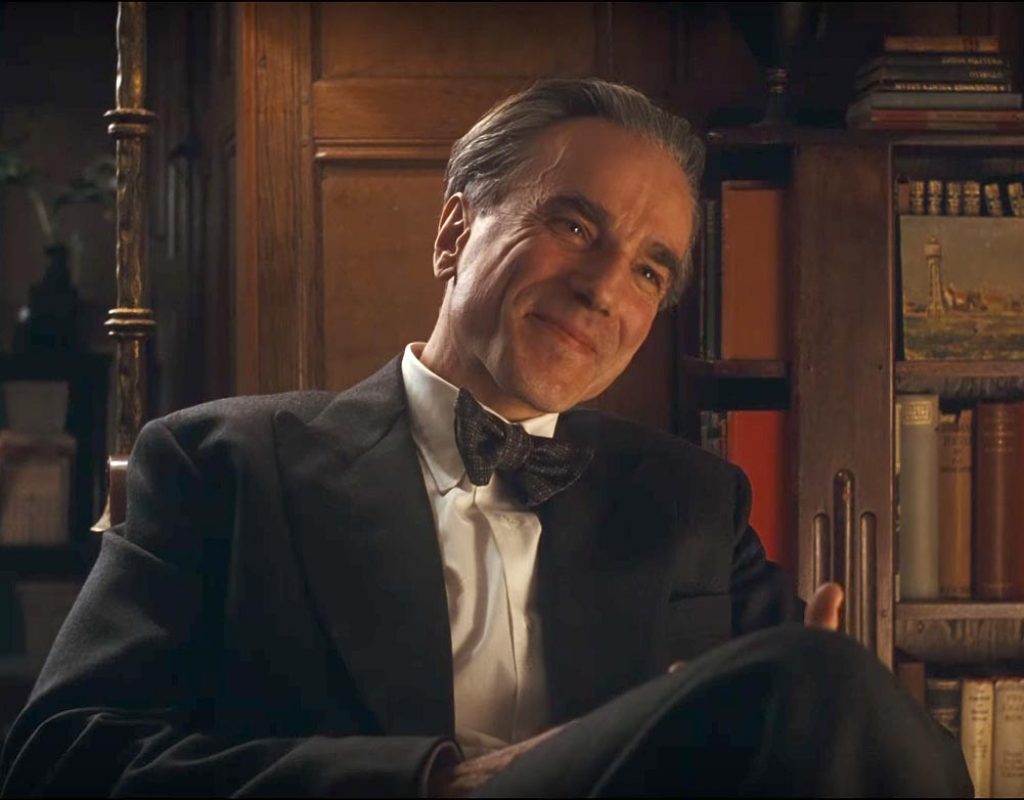Phantom Thread features a collaboration between editor Dylan Tichenor and director Paul Thomas Anderson. They had previously teamed on numerous projects, including Boogie Nights, Magnolia and There Will Be Blood, for which Tichenor was nominated for an Oscar for Best Achievement in Film Editing. Tichenor was also nominated for an Oscar for his work on Zero Dark Thirty and for ACE EDDIE Awards for his editing of There Will Be Blood, Brokeback Mountain and The Royal Tenenbaums. Phantom Thread is the story of Reynolds Woodcock (played by Daniel Day Lewis), who is a fictional ‘50s fashion designer. The story centers around his relationship with his
sister, Cyril (Lesley Manville), and his latest love, Alma (Vicky Krieps).
(This interview was transcribed with SpeedScriber. Thanks to Martin Baker at Digital Heaven)
HULLFISH: I told fellow editor, Joe Walker, that I’d be talking to you and he wanted to know about a great scene where Cyril and Reynolds are talking about how Alma is bad for the House of Woodcock, and the whole time Alma is behind him.
TICHENOR: Thank you, Joe! We call that the Tinker’s Curse Scene.
HULLFISH: There’re three huge players in that scene. How do you make the determination of where you want to be throughout the confrontation? There are so many choices of what to reveal and when and who is critical to show at any given point.
TICHENOR: Indeed. It’s pretty close to the original script. We cut some lines out, just to streamline it — to get to the moment a little faster. A couple things that we looked at: one is that, when Alma had originally walked in, Cyril’s eyes kind of flitted up, behind Reynolds, and Paul (director, Paul Thomas Anderson) said, “No. Let’s try it where she actively doesn’t look over Reynolds’ shoulder. So, that’s how the scene is now, because it works much better. It was much cooler. You can see Cyril actively locked in on Reynolds, not looking at Alma. It was one of those things where you have three excellent actors and perfect material. The only other thing I can say is, we tried several different takes of Reynolds at different points, but the one where he kind of spits and then wipes his mouth and pulls out his napkin is just great. I love scenes like this where there is such joy to be had in the reveals and tensions and holding looks and unsaid feelings.
HULLFISH: I love that choice that you mentioned of not having her look up because she’s a cool character and for her to be able to keep her eyes off Alma… One of the things that I really appreciated about the movie was it didn’t lead the audience a lot. I got that idea that, “Oh my gosh! She didn’t even look up, even though she knows she’s there!”
TICHENOR: Right. And WE know she knows she’s there. That’s not what she’s going to betray to Reynolds’ face.
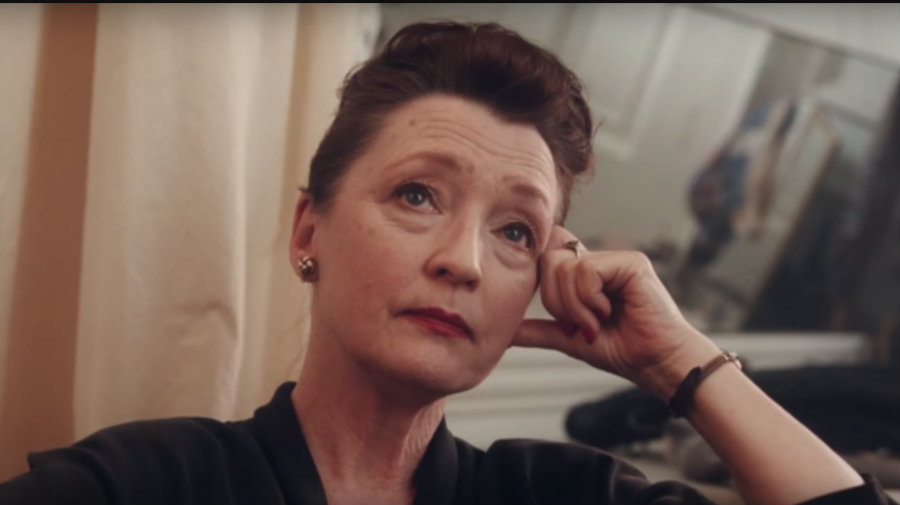 HULLFISH: Early in the film, there’s a moment where Reynolds is considering breaking up with his first girlfriend at the beginning of the movie. There’s music under most of that scene and then, just as he breaks up with her: no music. A conscious decision to go to the sound of the room and some clinking to make it just seem like… it’s kind of the cinematic version of crickets.
HULLFISH: Early in the film, there’s a moment where Reynolds is considering breaking up with his first girlfriend at the beginning of the movie. There’s music under most of that scene and then, just as he breaks up with her: no music. A conscious decision to go to the sound of the room and some clinking to make it just seem like… it’s kind of the cinematic version of crickets.
TICHENOR: …or just the cold reality that all romance has just turned off. I’ll tell you the truth, we had music ending several different places in that scene. We definitely tried a few different ways. We had different cues in that part of the movie: one where the music came out right in the beginning, one where the music went all the way through. One where I didn’t use any backgrounds. One where I had some street background. Lots of different messing around with that. And how it fell together early on was that the music comes through and then it pulls its way out of the scene just as the coldness of the behavior and the starkness of her position is being revealed. The music just feathers out.
HULLFISH: There’s a scene where Cyril says to Reynolds, “I think you should go to the country.” And there’s what could be considered shoe leather. But of course, it serves a purpose. Could you talk a little bit about those scenes of him driving out to the country instead of just cutting straight to where he’s sitting in the breakfast restaurant?
TICHENOR: We couldn’t just cut to that, though it was considered. There’s more missing from that section than actually. There’re several other scenes that were in between, and as usual, we had several different versions. To be quite honest there were versions that were intercut with Alma getting ready to go to work. There were versions where Reynolds first sees Alma in a church. There were lots of different ways that that worked. The driving was always something that we liked for Reynolds’ character because it was cold and lonely. It was manly and aloof. And it just sort of visually, cinematically, represented him – and the car was cool and the shots turned out really well. So there were many versions of that.
 We went back and forth and there were arguments in the cutting room about how much of that should be in there. Early on we took out the Alma intercut because that didn’t work, even though we do start the film with Alma, and Alma has the voice over. Interleaving their stories at that point was not helping us focus. And it was just sort of stylistically murky. It took a long time for the other scenes to come out. And there’s more at the gas station, but his exit from the stresses of the city to the relative comfort and security of the country is a sort of dynamic in the film that we wanted to establish here, and then of course, Alma as a country bumpkin. So, you could call it shoe leather but we actually feel like it is demonstrative of Reynolds’ character. It’s kind of a lovely cinematic moment. We just enjoyed watching it and it sets you up for Reynolds as he goes from his high pressure city life to his more reflective country life where he will be in the right mindset to be open to a new person stumbling, as it were, into his life.
We went back and forth and there were arguments in the cutting room about how much of that should be in there. Early on we took out the Alma intercut because that didn’t work, even though we do start the film with Alma, and Alma has the voice over. Interleaving their stories at that point was not helping us focus. And it was just sort of stylistically murky. It took a long time for the other scenes to come out. And there’s more at the gas station, but his exit from the stresses of the city to the relative comfort and security of the country is a sort of dynamic in the film that we wanted to establish here, and then of course, Alma as a country bumpkin. So, you could call it shoe leather but we actually feel like it is demonstrative of Reynolds’ character. It’s kind of a lovely cinematic moment. We just enjoyed watching it and it sets you up for Reynolds as he goes from his high pressure city life to his more reflective country life where he will be in the right mindset to be open to a new person stumbling, as it were, into his life.
HULLFISH: I know the term shoe-leather is kind of derogatory. But I was trying to get at the purpose of it, because the audience needs that time to get its head into a different space, right?
TICHENOR: No offense taken at all. I’m the hardest on this material anyway. Yeah. It’s hard to know when you need that and when you don’t. In all honesty, lots of movies cut that kind of stuff out completely. Cut to the bone because their running time’s too long and the audience is bored. But it is a real challenge, and a skill to hone, to know when that’s needed to create a bridge between states of mind – to let the audience exhale into a mood that will set them up for where they need to be. It’s all part of the grab bag of editing tricks. It’s not always just about the next concrete morsel of story. Sometimes the journey is the story.
HULLFISH: As I’ve said before: If you cut something down far enough it’s no longer art, it’s just information. You don’t have a creative movie anymore you’ve just got a plot.
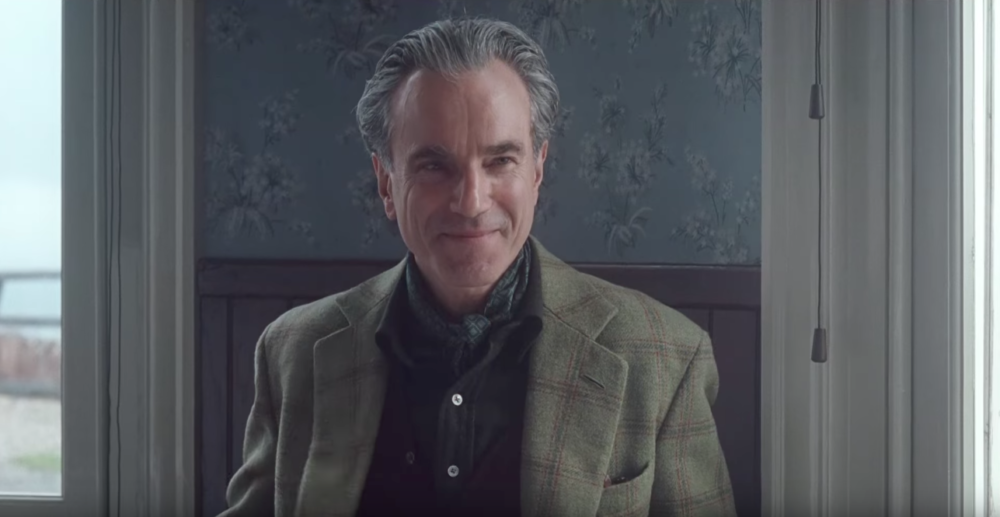 TICHENOR: And not only that, it might not even work. You can have all the information in there, but if you’re not setting the bed up properly to lay them down in it, they’re not going to receive it properly. Rhythm and storytelling go hand in hand. You can’t just jump right into something if what it really needs is a sort of Alley Oop up to the net before the slam dunk. So certainly we wanted the movie to move, not overstay its welcome, because it isn’t an overly complex plot. It doesn’t have a lot of story beats that you have to follow. It’s pretty clear where we are and what is happening. There’s subtle shades of power and desire and need and things like that. But we needed our moments to make sure everything works as effectively as possible.
TICHENOR: And not only that, it might not even work. You can have all the information in there, but if you’re not setting the bed up properly to lay them down in it, they’re not going to receive it properly. Rhythm and storytelling go hand in hand. You can’t just jump right into something if what it really needs is a sort of Alley Oop up to the net before the slam dunk. So certainly we wanted the movie to move, not overstay its welcome, because it isn’t an overly complex plot. It doesn’t have a lot of story beats that you have to follow. It’s pretty clear where we are and what is happening. There’s subtle shades of power and desire and need and things like that. But we needed our moments to make sure everything works as effectively as possible.
HULLFISH: Another little hold that I wanted to talk about — and again, these aren’t criticisms in any way – I thought the movie was beautifully edited, it’s just that — as one editor to another, they’re the things you notice about someone else’s control of their craft — there’s a great shot of Cyril – I think it’s the same scene where she says, “You should go to the country,” and the beginning shot is all played on her as she asks, “You want me to get rid of her?” Talk to me about that decision to not show Reynolds as she asks him this important question.
TICHENOR: Again, that was done a few different ways. I certainly had a version where I went to Reynolds and we heard the second half of the line on Cyril or go to Reynolds’ reaction and come back to Cyril for the second half. Really Lesley (Cyril) is just so great to look at and we’re about to get Reynolds’ reaction. Part of what’s fun in movies is withholding the information so that the audience builds up a need to know. That can work on a really grand scale and it can also work on a very micro scale like this does, so by not showing Reynolds, we’re all wondering, “How will he react to this person saying this?” The viewer figures that it doesn’t seem like someone is allowed to say that stuff to him. Then you finally see him and he’s taking it all in stride and he just nods and considers for a moment then, “Yeah, give her the October dress.” Then the audience sees, “Oh, now I see how it is in that family.”
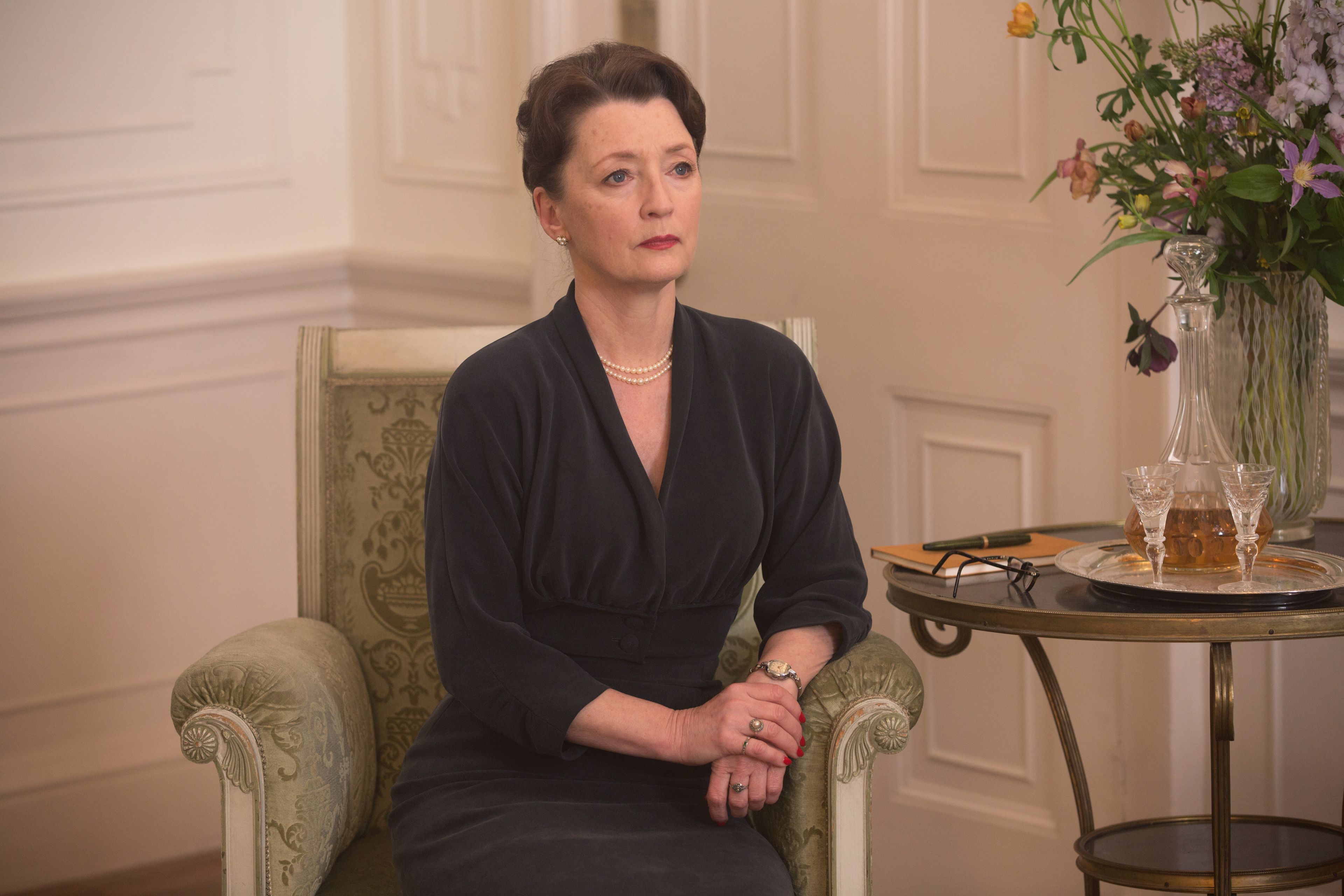
So it’s that kind of a dynamic where we’ve set up a mini-mystery and then we answer the mystery. It’s a micro-mystery, but it functions just the same. If you’re constantly showing every actor as they say their line and every reaction to every line, then that just becomes a kind of real-time, virtual reality cerebral feed, and that’s different from being told a story. I think Paul (director Paul Thomas Anderson) actually likes to be on people saying their lines more than I do. We had a couple back-and-forths about that. But there’s a balance.
HULLFISH: There’re some great little jumps in time. One of the things that is so special about editing is the idea that you can kind of expand time at moments and then compress time. And I felt like there was definitely that idea that sometimes you lingered on a scene, like when he first meets Alma. That scene is beautiful and you spend a great amount of time just getting to know them and feeling out that this weird relationship is starting to happen. And then right after that there’re big jumps in time.
TICHENOR: What happens is that we have a very long, almost real-time scene where they meet and he gives his very detailed breakfast order. She agrees to go to dinner with him. They go to dinner and they talk rather languidly about his mother and dresses and then we go to a really protracted sequence as he tells the story of making the dress for his mother and then they sit by the fire and she says, “How come you’re not married?” And then he says, “Help me” and they go upstairs to the atelier and we have a long sequence of measuring Alma and that sort of pseudo-sex scene where she’s sucked into his world. Basically, she starts to fall in love with him. There starts to be this real beating heart connection between the two of them. It has a lot to do with work. A lot to do with the art of his dressmaking and her submission or non-submission.
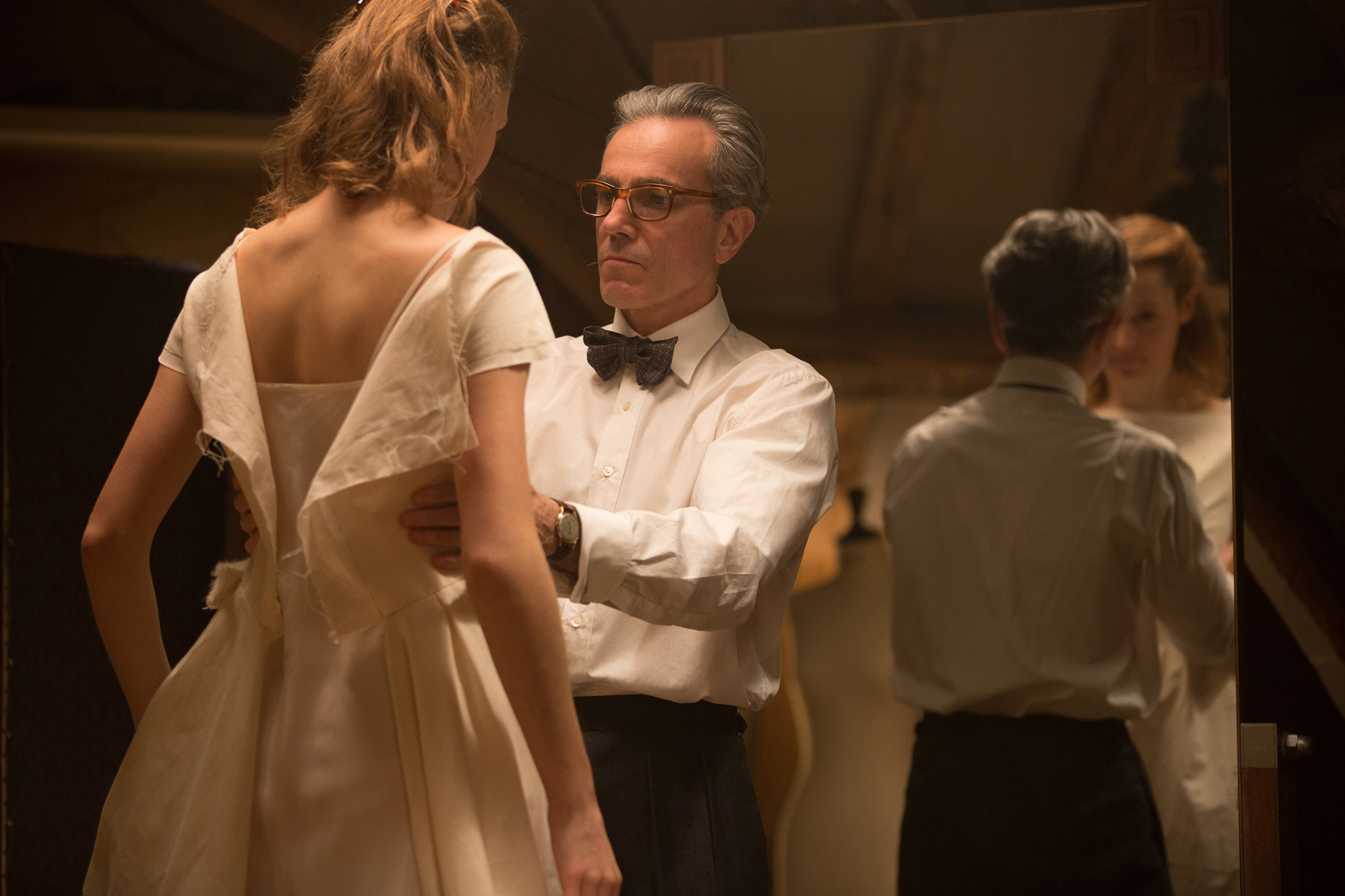 We start to slowly thread in the beginnings of her not being just a meager, kind of roll-over-and-take-it house model. She’s got her own opinions. She’s going to fight back on a few things. And it’s just going to get bigger and bigger as we go. But we’ve spent so long in real time: very slow, very dialogue-y, very kind of languid. Then we jump forward. We jump right to dinner and she’s wearing the dress and she’s already moved to the house and basically we do a dinner and then we have some voice over and we go to the house and then the next morning she’s partaking in fittings and giving her opinion about fabrics and we’re off to the races. That’s how I feel you have to edit. You need to vary rhythms of things. One section wanted to be one way, and now we have earned ourselves or necessitated the responsibility of grabbing the reins very tightly and let’s get into a gallop a little bit, so that the energy is there and the audience will lean forward. It’s an organic rhythm kind of thing.
We start to slowly thread in the beginnings of her not being just a meager, kind of roll-over-and-take-it house model. She’s got her own opinions. She’s going to fight back on a few things. And it’s just going to get bigger and bigger as we go. But we’ve spent so long in real time: very slow, very dialogue-y, very kind of languid. Then we jump forward. We jump right to dinner and she’s wearing the dress and she’s already moved to the house and basically we do a dinner and then we have some voice over and we go to the house and then the next morning she’s partaking in fittings and giving her opinion about fabrics and we’re off to the races. That’s how I feel you have to edit. You need to vary rhythms of things. One section wanted to be one way, and now we have earned ourselves or necessitated the responsibility of grabbing the reins very tightly and let’s get into a gallop a little bit, so that the energy is there and the audience will lean forward. It’s an organic rhythm kind of thing.
Originally, there were many other sequences and many other scenes in that section.
The atelier scene, where she gets measured, was three times the final length and the
fireside chat was eight minutes long. There’s a lot of stuff coming out and one of the
challenges is: What information do we need? What sidelines can we go down and what
sidelines don’t we go down? How do we keep this on a tightrope of emotion and
feeling?
HULLFISH: You mentioned at one point that you and the director were having some discussions about whether to play something on or off. The acting and the performances were so good…. It seemed like you played a lot of things off.
TICHENOR: Yeah. There are a number of times when you have actors that good and a script that’s that interesting that you can get double the value for your money. Oftentimes, when we’re off a person, I pay more attention to what they’re saying when I’m watching the reaction of the person listening to it. I think that you can have your cake and eat it too. You get information about the person who’s talking and you also get information about the person who’s listening. That’s the benefit of having such great actors that they’re in it with you real time and you can mine it to show the audience all the nuances and interesting turns and contradiction that can exist.
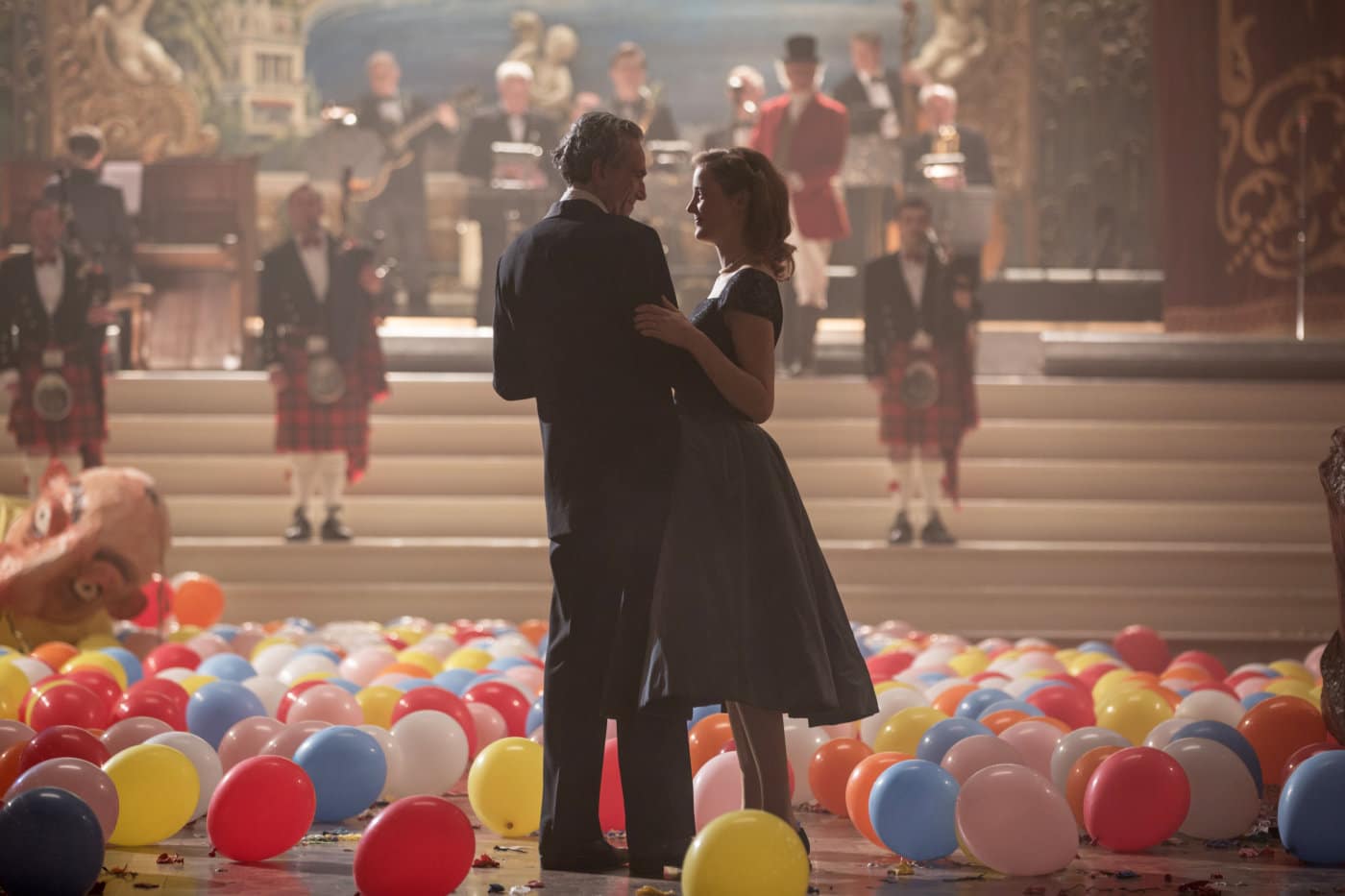 HULLFISH: It’s interesting that you say that you pay more attention to what someone’s saying when they’re off-camera. One of the reasons I do these interviews is because every editor’s opinions are different and there are no real rules of editing, so I love differences of opinion. In my interview with Eddie Hamilton, he says that playing a line off-camera means that sometimes the audience DOESN’T pay attention to it, so he never plays important plot points off-camera. Thoughts?
HULLFISH: It’s interesting that you say that you pay more attention to what someone’s saying when they’re off-camera. One of the reasons I do these interviews is because every editor’s opinions are different and there are no real rules of editing, so I love differences of opinion. In my interview with Eddie Hamilton, he says that playing a line off-camera means that sometimes the audience DOESN’T pay attention to it, so he never plays important plot points off-camera. Thoughts?
TICHENOR: I agree; I think if you’re talking about a capital Plot Point, yes, you can’t risk having that slip by, certainly in a faster-moving sequence, you’ll usually want to land something on camera to make it stick. Also, if there is panache, a stylistic flourish, the actor spins it with, it’s fun to see that of course; I just mean that in more dialogue-y scenes, I often feel a deeper emotional weaving together happen when I’m watching one person and hearing another, or playing a line over something else, non-character, that allows that information to float into your brain as words only, uncoupled to expression and personality.. it sometimes digs deep that way, I think.
HULLFISH: It seemed like a lot of the movie was played in subtext – almost more than spoken.
TICHENOR: In the atelier when he first measures her for the dress and when she meets Cyril, I’m playing a bit of dialogue off-camera on Cyril. What we’re getting that’s not in text necessarily is that Cyril is clocking Alma’s fiery attitude, the beginnings of it. You also see Alma in some off-camera dialogue and she is wondering, “What the hell this relationship between these two people can possibly be: “I guess they’re brother and sister? Seems very intimate. They’re also obviously business partners and there’s an assistant kind of a vibe or there is a partner vibe. But which one’s in charge? I’m not sure.” You see that on Alma’s face and you see Cyril being very aware of this new person’s self-possession, which is maybe unlike other people that have gone through this very same scene with Reynolds Woodcock. All that happens underneath the spoken dialogue. It’s only done in looks as subtext.
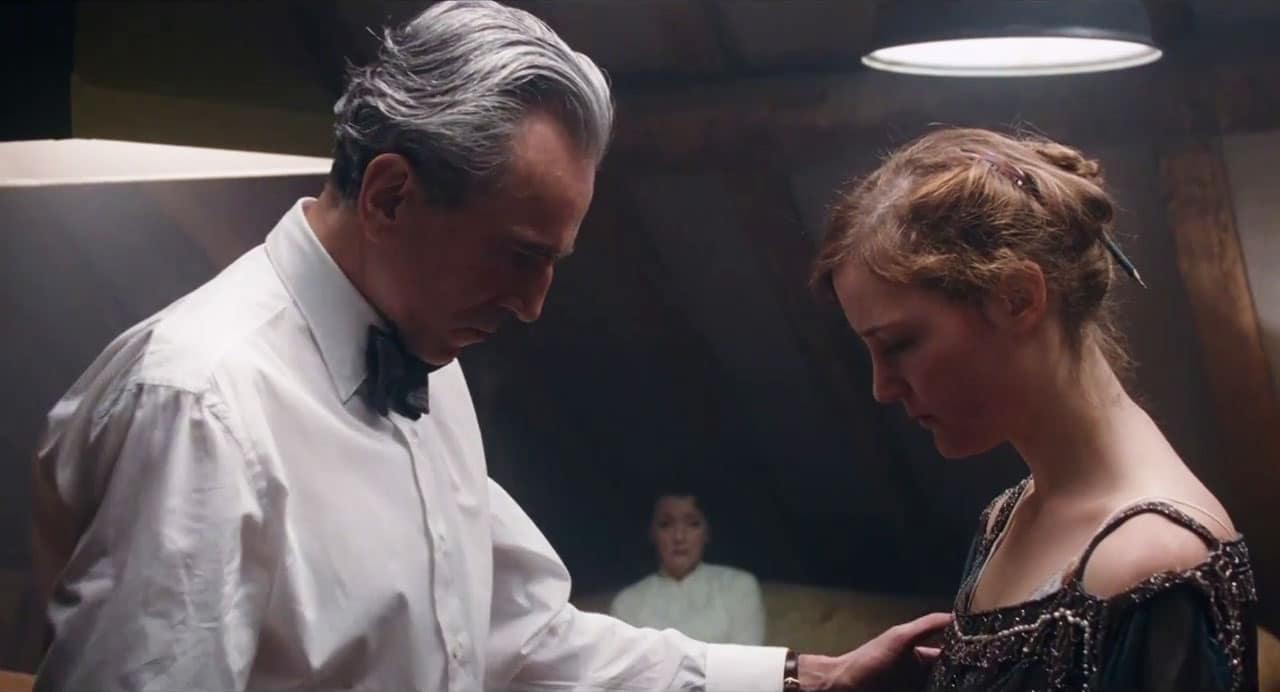 HULLFISH: I thought it was very interesting that you said it’s like a sex scene. A lot of those dressing scenes are played in close-ups with expressions that seemed like they were sex scenes.
HULLFISH: I thought it was very interesting that you said it’s like a sex scene. A lot of those dressing scenes are played in close-ups with expressions that seemed like they were sex scenes.
TICHENOR: Purposefully. There’s a moment in that scene where Reynolds is touching her and she is basically naked. She’s standing in front of this stranger – for all intents and purposes, and he’s touching her and moving around her and doing his thing in a very quasi-sexual way. It is not a sexual scene but it is a very intimate scene and it takes the place of sex for the story essentially. Reynolds kneels down behind her and he’s tugging on the folds of the dress and I’m on her face as she smiles and it’s purposefully to say, “This is Alma feeling the glow of Reynold’s attention and Reynold’s ability to maximize her gifts.” It’s like sex. It’s a give and take: “I’m going to do this and you’re going to feel good about it.” We separately shot a lot of the big closeups and fastening and needles and all of that to make that sequence work that way.
Also, with the close-ups during the dressing scenes, the truth is what we are trying to reveal: “How does this make these people feel?” This is how important clothing is and the process of fitting them is to these people. As Alma says in the voiceover, it changes the way she feels about herself completely. So that’s what we’re trying to show. Hopefully, we walked the line of showing the art of the dressmaking, but not descending into fashion-porn, as it were.
HULLFISH: Do you mean that you requested these close-ups after you saw the dailies and wanted more material to complete the effect?
TICHENOR: These were some things, shots like that, inserts of action, that I asked for as we went; a big list accumulated and I grabbed many of them while A-unit was doing actual scenes; and then in the last several days of the shoot we built a lot of insert sets on the stage and just popped them off one after another—inserts of sewing, cooking, books, photographs, Daniel’s eye, etc, etc. as you normally do, really. Some of them turned out really well, we were excited to get that stuff: good inserts can really ‘spice the soup’, put you in the character’s shoes, and just what’s needed to stitch together the wider angles in a nice way. I love ‘em.
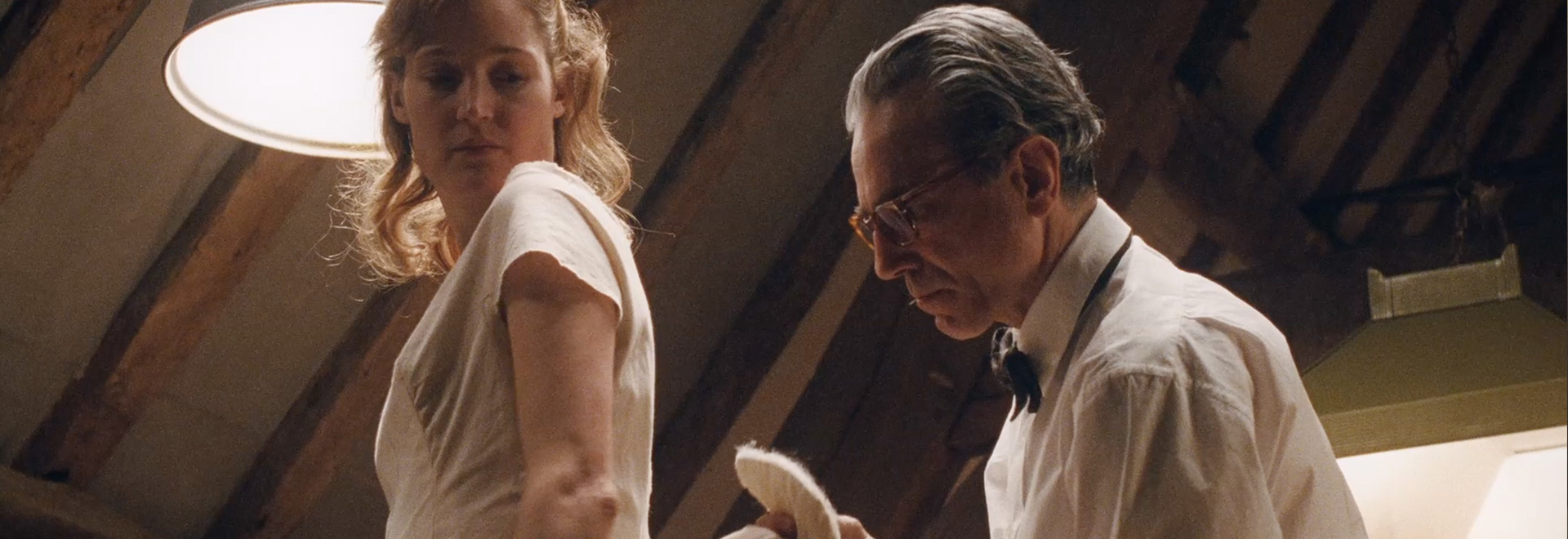 HULLFISH: The scene of a press conference with Barbara Rose: There’s a nice pre-lap to that scene. Were you trying to pace it up, or just make a smoother transition…?
HULLFISH: The scene of a press conference with Barbara Rose: There’s a nice pre-lap to that scene. Were you trying to pace it up, or just make a smoother transition…?
TICHENOR: Honestly, I think I do that a lot. I like pre and post laps. I like seeing something different from what I’m hearing. I like the synthesis of two different ideas coming together. I’m not consciously choosing to do that in this film or this sequence, but as I’m building things I naturally tend towards it. And yes, it does have the function of keeping the pace up, and pulling things along like rubberbands.
That’s a scene that originally went on a lot longer – when he’s dressing Barbara Rose.
She says, “Will you please come, Reynolds?” And he looks down in defeat. I
thought, “This is the time we launch forward. So, a way to help do that is to hear the
incoming audio and then it’s revealed visually what you’re hearing.
HULLFISH: There’s another place I remember a pre-lap or a post-lap: I think it was somewhere right after they get married going into their honeymoon in the Alps.
TICHENOR: Exactly. That is a post-lap. We’re in the wedding ceremony and we see Reynolds saying his vows and then the priest says, “And Alma….” And in your mind – as the audience member – you’re like, “Oh great. Now we’re going to hear Alma say the exact same thing.” And basically that’s boring. So it was at that point I thought, “Let’s jump forward.” So the priest says, “And Alma” but we only hear the rest of the priest as we jump visually to the honeymoon. There were other scenes in there and it got pared down to this final version. After the wedding, we cut to them having a little dinner celebration at the usual spot.
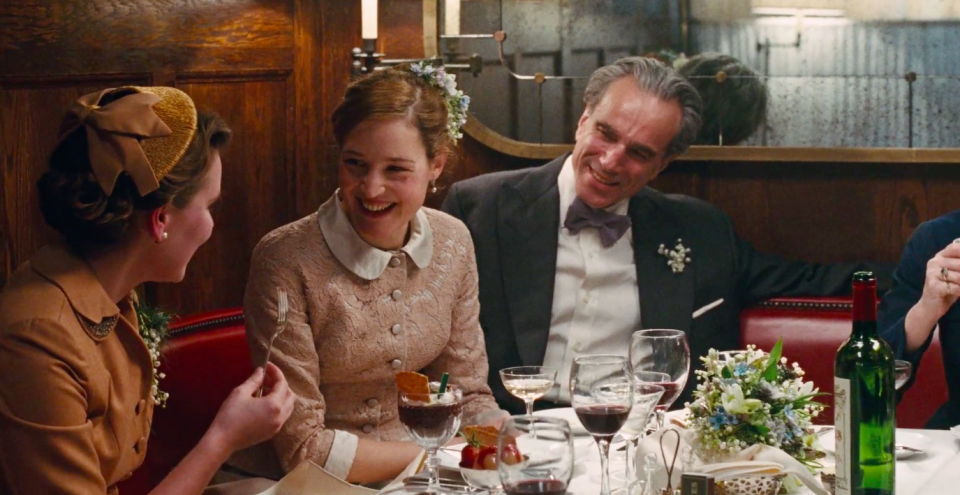 That’s actually a really cute little story that’s being told underneath, because we mixed the dialogue pretty low. But it’s Alma and her sister – that is sitting with her – and she is explaining what the word for ‘turtle’ in Luxembourgish is and that it actually translates to ‘a frog with a hat’. So, that is the dialogue that’s going on under the pullback. But we’re hearing the priest over it. As I was putting that together, Paul said, “It would be great to make the priest say, ‘I now pronounce you man and wife. You may kiss the bride.’ and have that land right on Alma, just as she starts to make big crunchy noises.” So I did that.
That’s actually a really cute little story that’s being told underneath, because we mixed the dialogue pretty low. But it’s Alma and her sister – that is sitting with her – and she is explaining what the word for ‘turtle’ in Luxembourgish is and that it actually translates to ‘a frog with a hat’. So, that is the dialogue that’s going on under the pullback. But we’re hearing the priest over it. As I was putting that together, Paul said, “It would be great to make the priest say, ‘I now pronounce you man and wife. You may kiss the bride.’ and have that land right on Alma, just as she starts to make big crunchy noises.” So I did that.
HULLFISH: What do you do during dailies and you’re looking at a bin full of footage and a blank timeline?
TICHENOR: (laughs)
HULLFISH: How do your assistants prep your bins for you? And then, what’s your approach?
TICHENOR: This question always makes me think of Tim Squyres (nominated for an editing Oscar for Life of Pi), because someone once asked him, “What’s your favorite part of the process?” and he said, “The assembly because things are wide open and there are so many possibilities.” But for me, that is my least favorite, because things are so wide open and there’re so many possibilities. My process is this: I watch dailies every day. I watch them all. I watch them on the big screen. I project them in video usually. Paul shoots film and prints film, so on a Paul movie, we have some film to watch occasionally, which is great. But generally I’m watching dailies on a video projector and I take notes. I take very specific notes about things that I like: lines that are good, lines that are bad, expressions, shots, pieces of things. I fill up binders with that.
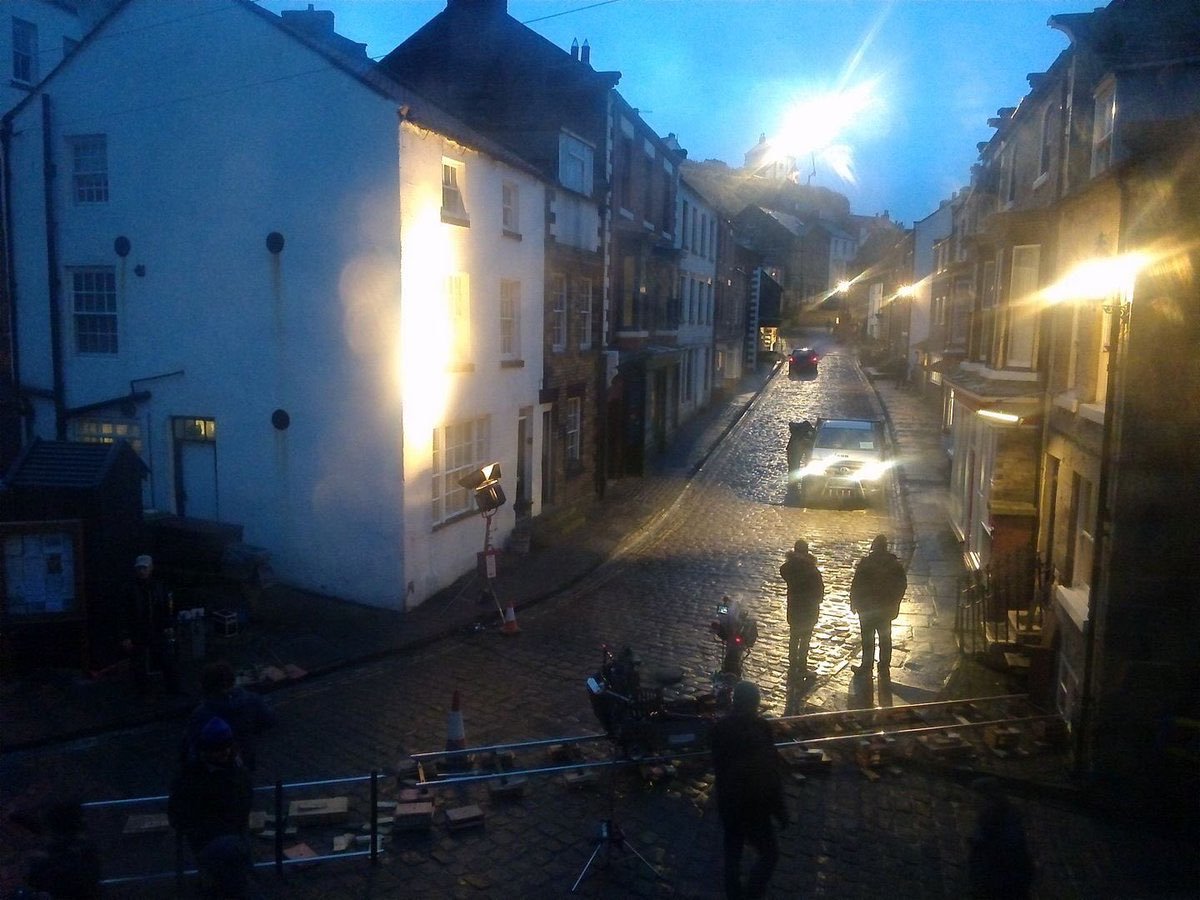 Then I build a select sequence which tries to be in the order of the scene: All the selects that I’ve called out in dailies in my notes. I often have my assistants help with that, so they will take my notes and I write down time-codes or footages or whatever, or specific lines, and we build the scene in scene order with all my selects kind of stacked up. So for a three minute scene I’ll end up with maybe 35 minutes of a sequence that is multiple readings of lines, multiple starting shots, multiple ending shots: the thoughts that I had in watching the dailies. Sometimes the director will be shooting something in a way where it’s clear that, specifically, this is supposed to work for this section of the film, but often not. As I watch dailies, I’m just sort of going with my gut and being open to whatever ideas occur to me in how to build the scenes in the most dynamic and effective and interesting way. And we string all that together in a sequence of ‘dailies selects’ and then I have, for every scene in the movie, a select sequence that is many many times longer than the scene.
Then I build a select sequence which tries to be in the order of the scene: All the selects that I’ve called out in dailies in my notes. I often have my assistants help with that, so they will take my notes and I write down time-codes or footages or whatever, or specific lines, and we build the scene in scene order with all my selects kind of stacked up. So for a three minute scene I’ll end up with maybe 35 minutes of a sequence that is multiple readings of lines, multiple starting shots, multiple ending shots: the thoughts that I had in watching the dailies. Sometimes the director will be shooting something in a way where it’s clear that, specifically, this is supposed to work for this section of the film, but often not. As I watch dailies, I’m just sort of going with my gut and being open to whatever ideas occur to me in how to build the scenes in the most dynamic and effective and interesting way. And we string all that together in a sequence of ‘dailies selects’ and then I have, for every scene in the movie, a select sequence that is many many times longer than the scene.
I start with that, and usually my first step is that I go through and watch the select sequence again and I drop a bunch of stuff that I’m definitely not interested in – because my mind has changed or things feel different now or whatever it is. And I do that process once or twice through, till I end up with a shorter sequence, and then I have to make hard decisions, like, “OK, I have two or three valid ideas of how to start” or valid ideas of ways to do a certain part of the scene. So, I have to pick the one I think I like the most and commit to that and build the scene based on that and just go forward and build the scene — and then you get to a certain point where things aren’t working and
you have to swap out takes for performance or for camera or for whatever is not working.
As we all know, it’s a huge jigsaw puzzle. I’m not big on versions from the beginning. I’m big on “Let me commit to something.” I will remember that there’re other options here, and that’s how things start. Basically that’s my approach on every movie. Some time after shooting I have a long version of an editor’s cut that represents a lot of decisions, but is a fat, not-totally-figured-out version of the movie. Then I just start back at the beginning and fix it all.
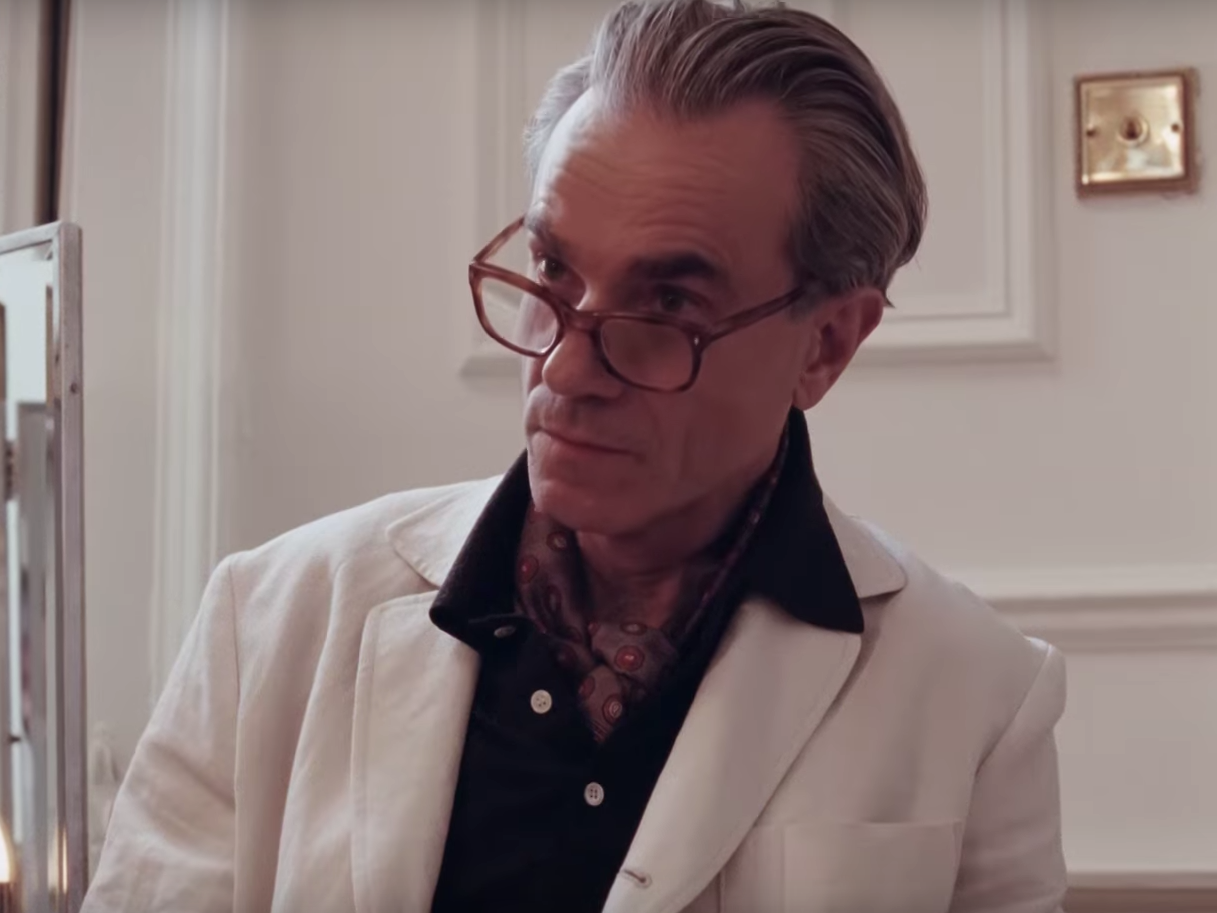 HULLFISH: …because now you’ve got the context of the scenes around it.
HULLFISH: …because now you’ve got the context of the scenes around it.
TICHENOR: That’s right. You could watch the movie that way – even though it’s big and long and sloppy. You can feel the movie and you get a sense of the performances and of the dynamic of storytelling that, “Oh, this sequence is really going to be good.” Or “Oh my god, we don’t need that scene at all.” Or “You know what we’re missing?” Or “This
should happen before that.” You start to have all those feelings. I do scene boards like I guess almost everybody now. Not too many people did it when I was starting out with Altman (director, Robert Altman) but a lot of people do scene boards now.
I do picture cards usually with the scene title under them and use that to help move stuff
around or figure out stuff to try to lift out.
Often, if I cut a series of scenes down to a montage, then I’ll have the assistants make a new card that is a split-screen card that has representative images from the montaged scenes, but all one card. So as you’re looking at that scene there’s a correlation between space taken up on the board and time taken up in the movie so that you can start to judge relative balance.
HULLFISH: On the scene board do you do anything to indicate the act breaks?
TICHENOR: Generally, no. We (Paul and I) keep that in our head. We talked about it a lot on this film, truthfully, because the original assembly – with a lot of scenes in it that are now missing – pushed the action much later and that skewed our sense of “What is the first act?” And that skewed our sense of “What are the inciting incidents? What’s the first big turn?” And that in turn skewed our interpretation of “What’s the main storyline? What’s the thread that I’m basing everything on?” Truthfully, it changed over time working on the film. Deciding: “No, when she steps into the house. That is the end of the first act.” She’s committed to a relationship with Reynolds the same way as Reynolds has said, “Okay here’s another person and I’m going to let her in and she’s going to be part of the crew around here.” That’s the end of the first act.
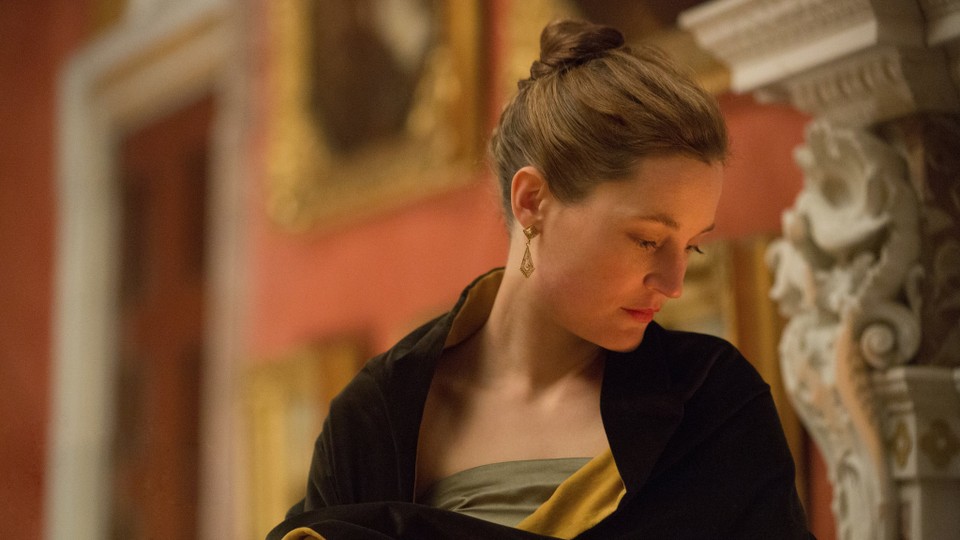 When they meet in the breakfast room, that’s at about 15 minutes. That’s essentially our inciting incident. That’s not how it came out originally. With all the scenes in it originally, all those things pushed story points much later, and you couldn’t see the forest through the trees, as it were. Breakfast was like 40 minutes in. So when you look at the scene board you go, “You know what? This is really the first big turning point.”
When they meet in the breakfast room, that’s at about 15 minutes. That’s essentially our inciting incident. That’s not how it came out originally. With all the scenes in it originally, all those things pushed story points much later, and you couldn’t see the forest through the trees, as it were. Breakfast was like 40 minutes in. So when you look at the scene board you go, “You know what? This is really the first big turning point.”
We don’t always talk in those terms. You don’t, in any way, stick to this number of minutes and that number of minutes, but on this film, maybe more than others – certainly more than any other with Paul – we talked about it a lot because it helped us focus what the story was trying to be, because it was such a nebulous thing from a plot point of view. It helped us focus. And that helps you decide how to cut. So it’s extremely useful. I don’t think we talked a lot about first act, second act, third act. I don’t put marks on the board for it, but we certainly do talk about structure. We talk about midpoint you know: “OK, so here we are 52 minutes in or whatever. Are we running long or we running short? Are we 15 minutes long? How are we feeling?” Because there’s a natural rhythm
of storytelling that certainly American audiences have gotten used to—and we don’t have to subscribe to that or be proscribed by it— but, that said it’s nice to be aware, because you feel it in your stomach. It’s not just something in the Syd Fields book (the seminal, “Screenplay: The Foundations of Screenwriting”). I think it’s because when Og sat around the campfire, telling stories, he’d get to about two hours and he’d think, “That’s about it for this group tonight. I’ve got to go get some shut eye.” There’s a human rhythm to it. There’s only so long you can show me images until I say, “What am I worried about here, so that I have a vested interest in this story?” That’s just a human thing. It’s not necessarily movies or American or anything like that. It’s just human communication I think.
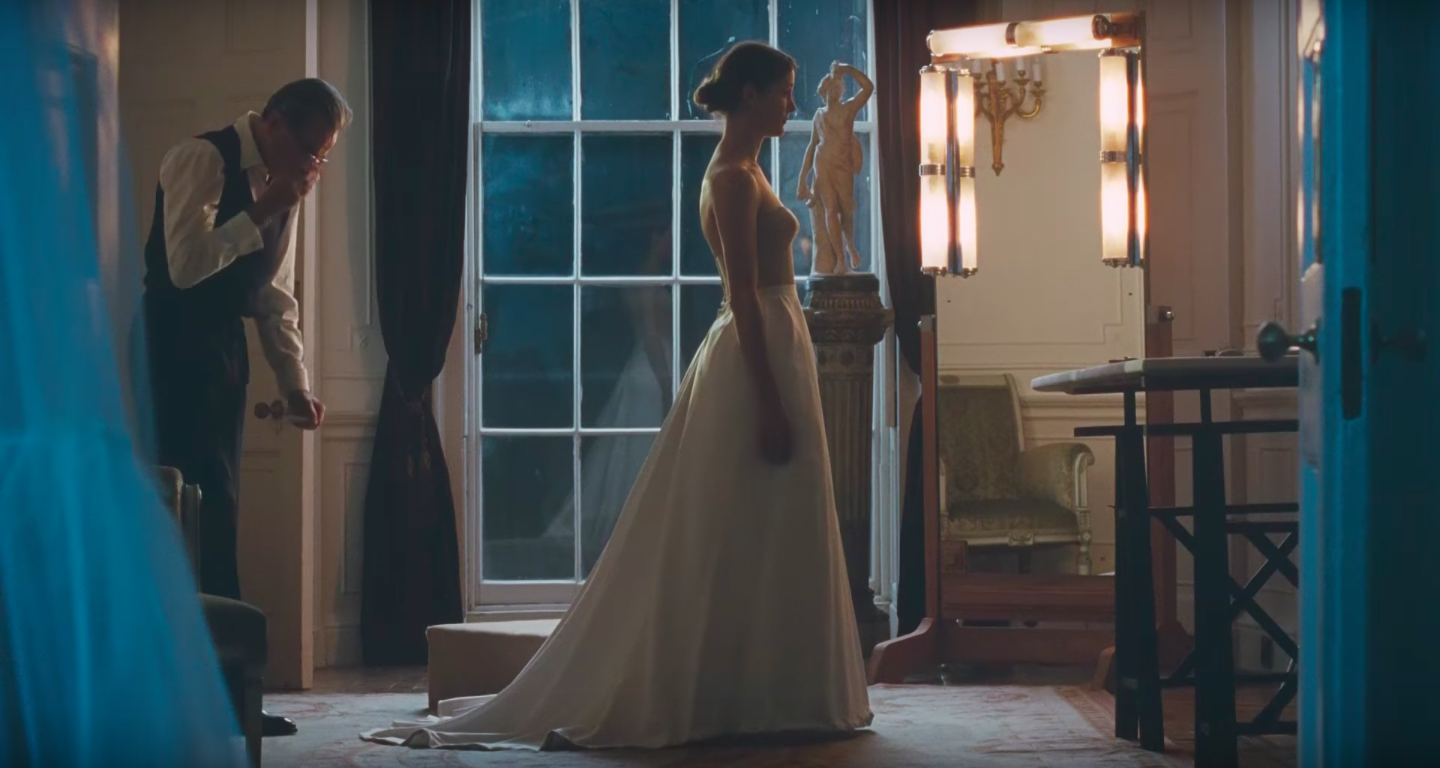 HULLFISH: Do you remember how long the first assembly of the movie was?
HULLFISH: Do you remember how long the first assembly of the movie was?
TICHENOR: Something like 3:10.
HULLFISH: Now how long is it?
TICHENOR: You watched 2:10 with credits, so the story itself is about 2:03.
HULLFISH: I noticed there was a music editor. How much music did you put in — either before he got there or because you wanted to do it yourself?
TICHENOR: That’s not a music editor as you might typically have. Graeme (music editor, Graeme Stewart) works with our composer, Jonny Greenwood. I do most of the music editing during editing. We take a lot of songs that Jonny makes, some with picture in mind, mostly not. So we have bins of music, a hundred songs, or we’ll have 40 cues from Jonny and 50 cues from other places in the world. Nelson Riddle, Ira Gershwin, Brahms and Schubert. Lots of stuff that Paul has been listening to as he was writing, as he was thinking about stuff, just collecting music that we’ve got going in the Avid. And then we place the music as we go.
The music changes a lot and then we move songs around and do a lot of editing in the picture cutting room. And then when things are starting to settle down we’ll send sequences back to Jonny so that he can make the cues work better to the picture. Graeme manages all of that as we start to get into that zone and then Graeme manages the recording of tracks with Jonny and then he does all the final edits to go to the mix stage.
Usually I do quite a lot of music editing and placement. Most of the time I try to put music in late in the process. Paul likes to put it in very early, so we balance each other out a little bit. But sometimes I’ll do sequences and I will take a cue from the grab bag of cues and he’ll like it. Other times he’ll go, “No, no, no. That’s supposed to be this cue.” Then a lot of times – most of the time – it’s the two of us just trying stuff in the editing room one after another and doing edits and “What if we jump to this and put an ending on that?”
HULLFISH: Another big decision with music is not just which cue to use, but when to bring it in and when to end it.
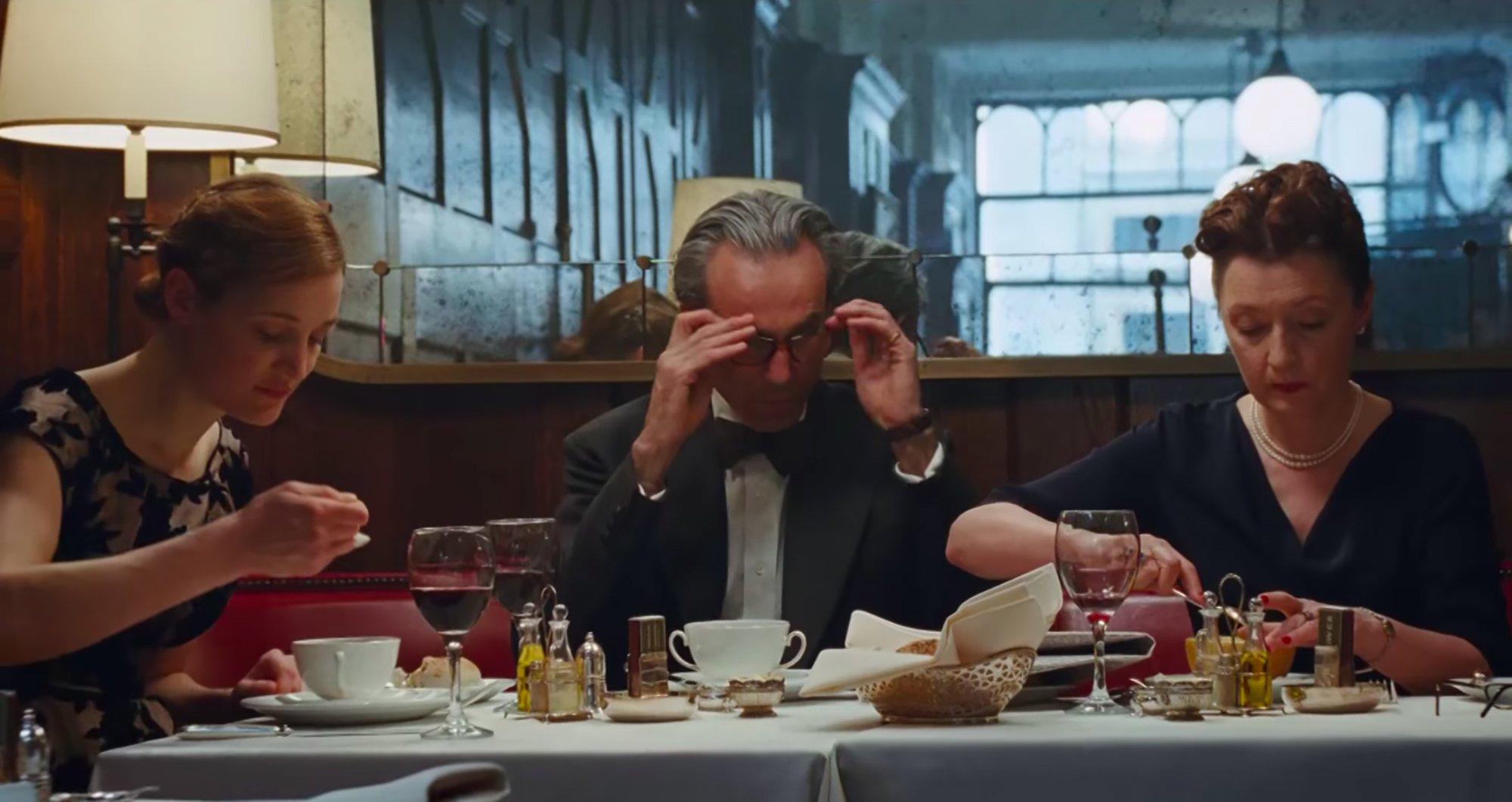 TICHENOR: Absolutely. That is a big part of it. There’s tons of music in this movie. It’s wall to wall essentially. So that’s also a discussion: “Too much music. Let’s drop a cue. This doesn’t have to go on this long. Let’s try it dry.”
TICHENOR: Absolutely. That is a big part of it. There’s tons of music in this movie. It’s wall to wall essentially. So that’s also a discussion: “Too much music. Let’s drop a cue. This doesn’t have to go on this long. Let’s try it dry.”
A lot of times music glosses over problems. Cueing music — spotting it – is a big part of how well music is going to work, and it’s a big part of my job because even if a director says, “Let’s try this cue here,” he/she doesn’t necessarily say where to start or what part of the song to use. I think a lot of movies start cues too early as well; generally, I like to hold off a bit, let the emotion naturally crest and then use a cue to surf it, in a way. I think that pushes the audiences less, they are less manipulated, but still maximizes the moment.
HULLFISH: A lot of the music, it seems to me, was less score than it was classical music, or jazz tunes.
TICHENOR: It’s mostly Jonny by far. But he was working in a style — Paul and Johnny talked early on about Nelson Riddle – The Gershwins – that kind of big bands jazzy era, slash, full-on classical. One of our main themes is called Riddle Piano because it was inspired by Nelson Riddle.
HULLFISH: There’s an interesting piece of score where Alma and Reynolds are sitting at the bottom of staircase, discussing going out for New Years. There’s like a weird whine.
TICHENOR: And there’s a little bit of that when she first poisons him as well. That’s something that was inspired by a cue that Johnny did for Inherent Vice (another Paul Thomas Anderson movie from 2014). It was a synthesizer cue. It was sort of an uncomfortable “vibrate your bones, something’s really wrong in the universe” vibe that we wanted to achieve in those couple of sections.
HULLFISH: Also in that scene is a radio that plays through the whole conversation.
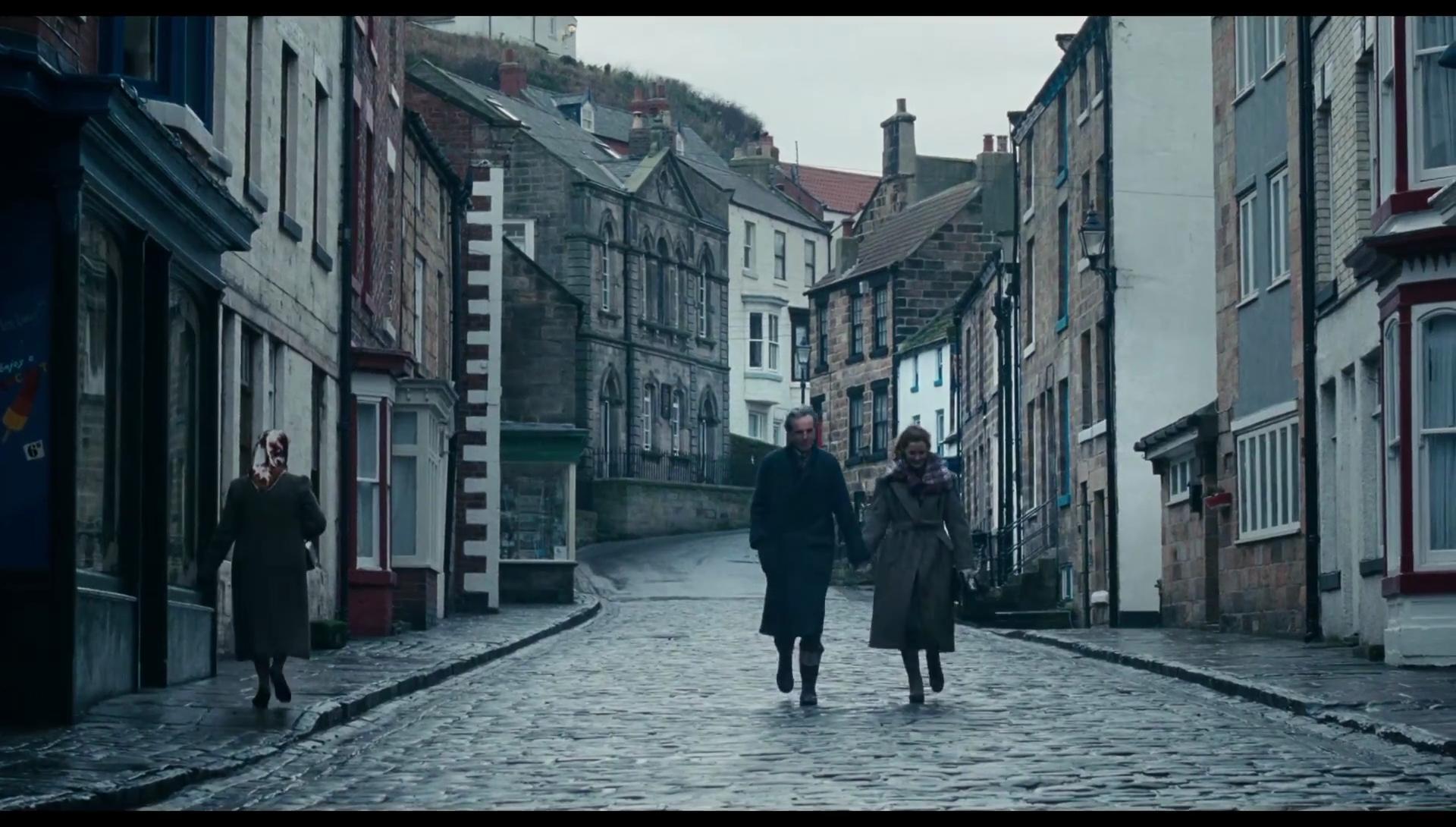 TICHENOR: It’s a New Year’s Eve broadcast from 1955 that is pretty historically accurate. The challenge was to try to get pieces of that broadcast to poke through the conversation, but not distract from the scene. It’s Bertrand Russell. It’s interesting what he’s saying. There’s some resonance that I wanted to make sure landed with the audience and a couple of things that he said where our characters are and then there’s stuff that he says that are just sort of kind of historically interesting: the way of talking about black people. There’s a fine line there and you don’t want to be distracting. I hope we did it right. Not sure, actually, (laughs). There’s always things to keep tweaking. never ends…
TICHENOR: It’s a New Year’s Eve broadcast from 1955 that is pretty historically accurate. The challenge was to try to get pieces of that broadcast to poke through the conversation, but not distract from the scene. It’s Bertrand Russell. It’s interesting what he’s saying. There’s some resonance that I wanted to make sure landed with the audience and a couple of things that he said where our characters are and then there’s stuff that he says that are just sort of kind of historically interesting: the way of talking about black people. There’s a fine line there and you don’t want to be distracting. I hope we did it right. Not sure, actually, (laughs). There’s always things to keep tweaking. never ends…
HULLFISH: There were these great little moments where you see a twitch under an eye or the slightest little movement in a face that really made things come alive and really gave you a sense of what people were thinking.
TICHENOR: We very much pay attention to that stuff. Lots of little things that are illuminating characters’ states of mind or thoughts. It’s always so exciting to me to find things to put in the scene that aren’t a word of dialogue and it’s not the sort of expected reaction. It’s something else, something more, that is just really human in the moment.
We got some really great moments of Daniel Day Lewis being vulnerable in this movie in a way that he often is not. And they’re usually not related to dialogue. They’re usually just expressions and moments he has that we managed to get in here that I think really helps with the dynamic. The sort of triad of Reynolds/Alma/Cyril and how the power shifts.
Having Daniel Day Lewis play a part where he is as toweringly large and commanding –
as he usually is – and then is put on his back foot in a really human way where you get a glimpse under the bombast and you say, “Oh I see what’s festering away in that guy.”
That’s all about finding the little flicks of an eyelid, the tremor of a lip, the averted gaze.
HULLFISH: The subtleties that we talked about reminded me of one scene in the movie where Alma was eating her breakfast cereal and Reynolds’ expression as he flinches at one of her crunches. It made the audience break out into laughter like it was a punchline.
TICHENOR: I’m so pleased that works. That was a scene that came together really quickly. And it’s just because Daniel’s so amazing, as is Vicky. They just gave us what we needed. We’re using every last bit of Daniel that we had for those moments. That first reaction – when he sort of gives a lip smack and a swallow at the same time – you just see everything you need to see. And it’s also about where it comes in the movie because we’ve just come off a long, emotional sequence with the visiting visions of the mom and all of that and then we land on this punchline. That’s Paul Anderson conceiving that idea and the actors just giving us exactly what we needed. Pretty great how well that worked out, I think.
HULLFISH: Can you describe the choices or challenges of editing a few scenes for me?
TICHENOR: This is the scene where Alma is first working as a mannequin (model) in the city atelier and she is expressing her somewhat negative opinion on something, certainly a bit out of the ordinary for a house model. so Reynolds is taken aback but ultimately titillated and then annoyed, and Cyril is bemused. It’s the beginning of their drama, the dynamic of this new girl wedging into the staid existence of the House of Woodcock. There were several versions of this scene, naturally; cutting to coverage earlier, later; doing it more from Alma’s POV, or Cyril’s; how big Reynolds got in his reactions; some bits with the assistants coming in and out. Actually, Cyril wasn’t in the scene at the head originally, it was sort of two scenes, but we mushed it together to just get to the verb much quicker. And the scene went on with more dialogue, but I felt strongly that as soon as they bicker and Reynolds growls ‘stop’, that’s the scene, that’s the moment that says: “So this is the beginning. She’s not like everyone else. The game’s afoot,” basically. This begins a montage-y section that changed many times before we zeroed in on the length and content. there were bits of Alma sewing and trying to fit it, and more photography and other things.
TICHENOR: This is the fireside chat. This scene was originally many times this length. A lot more dialogue. Sections about his children and the baby-mamas, etc. About Alma’s desire to be a wife… a lot… minutes. But, ultimately, and from the beginning really, it was rhythmically obviously too long, but also way too many things in it. In paring down the film we took out most of this scene, so it plays as part of the falling-in-love date and not as its own chapter, which is much more what was needed. At first I over-trimmed and then we brought back a couple things like the talk about making dresses. It was a process getting it to be closer to what was needed and what the film could carry at this
moment. It’s a delicate time where we ask the audience to sit and watch these people talk for a long time, but if we don’t do it enough, the characters haven’t gotten to know each other. Alma wouldn’t have the time to fall for him, etc. so, it’s a tightrope that we plucked on for quite a bit, carving it to as little as would do the trick.
TICHENOR: This is a whole conversation. All on Cyril. At this point we really felt we’ve stared at Reynolds enough, so more Lesley (Cyril). This was originally a different take, but we had to change it because of, astonishingly, continuity issues — which I never really get stuck on, I’m much more a fan of Marty/Thelma-type crash-cuts sometimes, but here we had a tea-cup-at-her-lips / tea-cup-down-on-the-table cut that just didn’t play. This was because we needed the one-and-only bit of Reynolds doing his reaction that he does in the take, so we had to go with what Lesley’s hand was doing, split screen wasn’t an option here. This was a section where we moved an idea / some action from later in the film to earlier and had to jigger stuff around to make it land properly. All on Cyril, for the love of Cyril and also for necessity of story-telling.
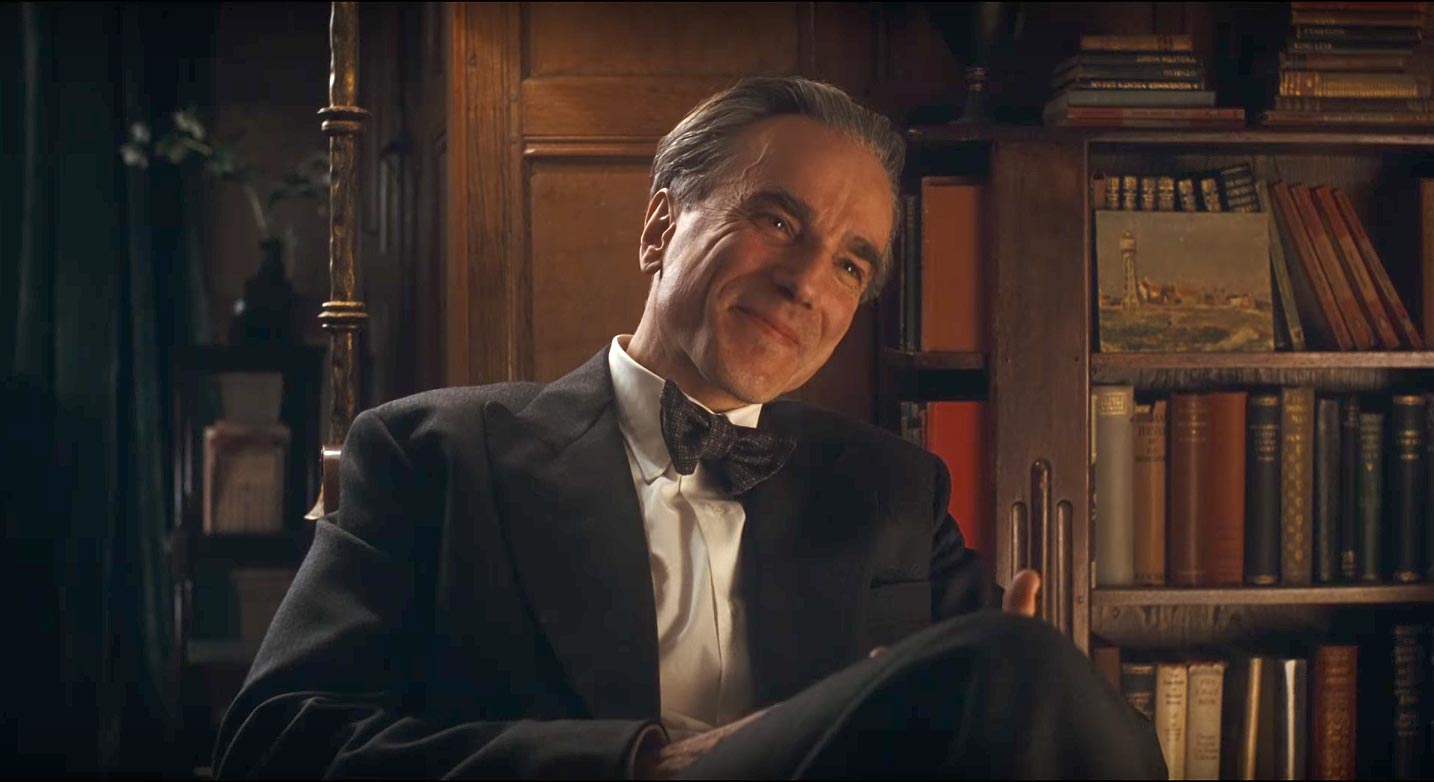 HULLFISH: Finally, a fellow editor, Harry Yoon, asked me to have you discuss the great use of tonal shifts in the scene where Alma is making an omelet for Reynolds as they’re having a conversation.
HULLFISH: Finally, a fellow editor, Harry Yoon, asked me to have you discuss the great use of tonal shifts in the scene where Alma is making an omelet for Reynolds as they’re having a conversation.
TICHENOR: Hello Harry! Thanks. That scene is a favorite. There were many shot choices and a lot of great bits to work with in dailies. It is a pas-de-deux sans dialogue, mainly, and it’s about looks and expectations and fears. It came together fairly well out of the box and mostly what was worked on was lengthening, actually, (believe it or not) the looks between them right before she talks. I had had it a bit tighter. Also, we went back and added in the bit where she pulls the mushroom book off the shelf in the very beginning so we could be very clear that Reynolds has seen this and knows, sort of, what she’s up to, or at least he’s suspicious. They are both perfect in that scene. I love the inserts we did, and the low angle CUs of Alma asking if he wants a martini… it’s very Hitchcock. The tension builds in their looks and is in the fear of the possibilities… and the expectation that he might fly off the handle or slip the noose somehow. We fear there must be some violence to come, but it’s a violence of intention, of will, not physical. and then turning that on its head and it becomes a quasi-domination role-reversal thing, and it’s revealed that this is how things need to work in this relationship. They each get what they need. Somehow, in this wacky scenario, it’s about giving up control, in an ultimate way. It’s about trust, and how that is the core of any relationship. I do love how we feel curious, nervous, excited, afraid, tense, almost giddy at moments, as we slide along with them. I hope!
HULLFISH: This has been a great, enlightening conversation. Thank you.
TICHENOR: Yes! Thanks, Steve, so much, I really enjoyed it.
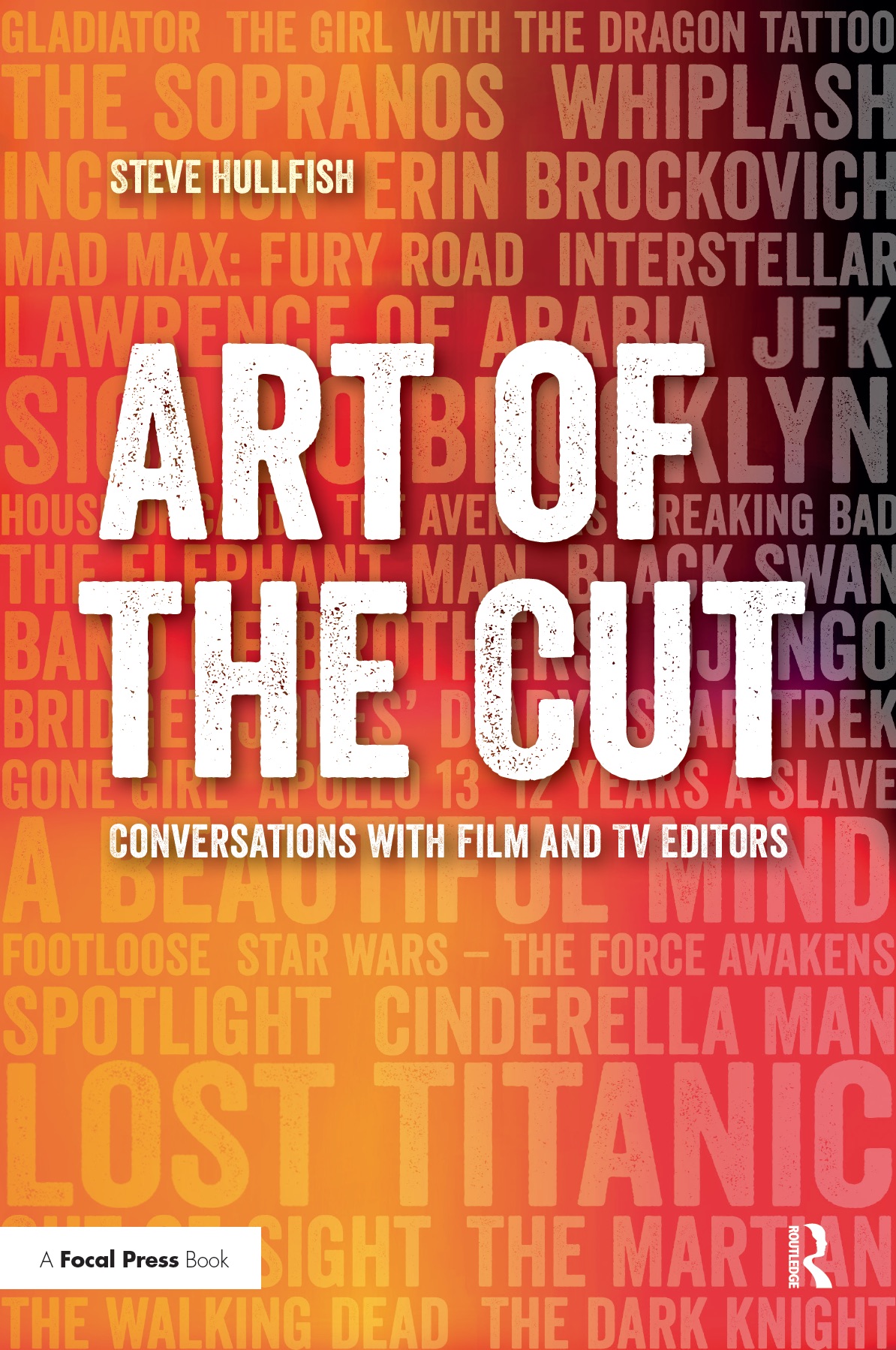 To read more interviews in the Art of the Cut series, check out THIS LINK and follow me on Twitter @stevehullfish
To read more interviews in the Art of the Cut series, check out THIS LINK and follow me on Twitter @stevehullfish
The first 50 interviews in the series provided the material for the book, “Art of the Cut: Conversations with Film and TV Editors.” This is a unique book that breaks down interviews with many of the world’s best editors and organizes it into a virtual roundtable discussion centering on the topics editors care about. It is a powerful tool for experienced and aspiring editors alike. Cinemontage and CinemaEditor magazine both gave it rave reviews. No other book provides the breadth of opinion and experience. Combined, the editors featured in the book have edited for over 1,000 years on many of the most iconic, critically acclaimed and biggest box office hits in the history of cinema.

Filmtools
Filmmakers go-to destination for pre-production, production & post production equipment!
Shop Now